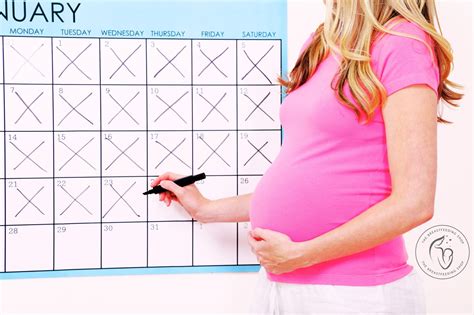Intro
Calculate your pregnancy due date with our guide, covering conception, gestation, and birth planning, using LMP, ultrasound, and fertility tracking methods for accurate estimation.
Calculating your pregnancy due date is an exciting and important step for expecting mothers. Knowing the due date helps in preparing for the baby's arrival, scheduling prenatal check-ups, and making necessary arrangements. The due date is typically calculated from the first day of the last menstrual period (LMP), and it's usually around 40 weeks from that date. However, it's essential to understand that every pregnancy is unique, and the actual birth date may vary.
Pregnancy due date calculation is a crucial aspect of prenatal care, as it allows healthcare providers to monitor the baby's growth and development. The due date is also used to identify potential complications early on, ensuring the best possible outcomes for both the mother and the baby. With the advancement of technology, there are various methods to calculate the due date, including online calculators, mobile apps, and ultrasound scans.
The importance of calculating the pregnancy due date cannot be overstated. It helps expecting mothers prepare emotionally, physically, and financially for the arrival of their baby. Knowing the due date also enables mothers to plan their work leave, childcare, and other essential arrangements. Furthermore, calculating the due date allows healthcare providers to schedule regular check-ups, ensuring that the mother and the baby receive the necessary care and attention throughout the pregnancy.
Understanding Pregnancy Due Date Calculation

Calculating the pregnancy due date involves several methods, including the LMP method, ultrasound scans, and conception date estimation. The LMP method is the most commonly used technique, which assumes that ovulation occurs on day 14 of a 28-day menstrual cycle. However, this method may not be accurate for women with irregular menstrual cycles. Ultrasound scans, on the other hand, provide a more accurate estimate of the due date, especially during the early stages of pregnancy.
Methods of Calculating Pregnancy Due Date
There are several methods to calculate the pregnancy due date, including: * Last Menstrual Period (LMP) method: This method calculates the due date based on the first day of the last menstrual period. * Ultrasound scan: This method uses ultrasound technology to measure the size of the fetus and estimate the due date. * Conception date estimation: This method calculates the due date based on the estimated date of conception. * Fetal heartbeat detection: This method uses a fetal doppler to detect the baby's heartbeat and estimate the due date.How to Calculate Pregnancy Due Date Using LMP Method

To calculate the pregnancy due date using the LMP method, follow these steps:
- Determine the first day of the last menstrual period (LMP).
- Count forward 280 days from the LMP.
- Add 7 days to the result. The resulting date is the estimated due date. For example, if the LMP was January 1, the due date would be October 8.
Advantages and Limitations of LMP Method
The LMP method is a simple and widely used technique for calculating the pregnancy due date. However, it has some limitations, including: * Assumption of a regular 28-day menstrual cycle: Women with irregular menstrual cycles may not get an accurate due date using this method. * Ovulation date uncertainty: The exact date of ovulation may vary, affecting the accuracy of the due date calculation. * Fetal development variability: Fetal development can vary from one pregnancy to another, making it challenging to estimate the due date accurately.Role of Ultrasound Scans in Calculating Pregnancy Due Date

Ultrasound scans play a crucial role in calculating the pregnancy due date, especially during the early stages of pregnancy. The scans use high-frequency sound waves to create images of the fetus, allowing healthcare providers to measure the size and estimate the due date. The accuracy of ultrasound scans depends on the gestational age and the quality of the equipment used.
Types of Ultrasound Scans Used for Due Date Calculation
There are several types of ultrasound scans used for due date calculation, including: * Transvaginal ultrasound: This scan is used during the early stages of pregnancy to measure the size of the fetus and estimate the due date. * Transabdominal ultrasound: This scan is used during the later stages of pregnancy to measure the size of the fetus and estimate the due date. * Doppler ultrasound: This scan uses the Doppler effect to detect the baby's heartbeat and estimate the due date.Factors Affecting Pregnancy Due Date Calculation

Several factors can affect the accuracy of pregnancy due date calculation, including:
- Irregular menstrual cycles: Women with irregular menstrual cycles may not get an accurate due date using the LMP method.
- Multiple pregnancies: Women carrying multiple babies may have a different due date than those carrying a single baby.
- Fetal growth restriction: Fetal growth restriction can affect the accuracy of due date calculation.
- Previous pregnancies: Women who have had previous pregnancies may have a different due date than first-time mothers.
Impact of Lifestyle Factors on Pregnancy Due Date
Lifestyle factors, such as diet, exercise, and stress, can also impact the pregnancy due date. A healthy diet and regular exercise can help support fetal growth and development, while high stress levels can increase the risk of preterm labor.Preparing for the Baby's Arrival

Once the due date is calculated, expecting mothers can start preparing for the baby's arrival. This includes:
- Creating a birth plan: A birth plan outlines the mother's preferences for labor, delivery, and postpartum care.
- Attending prenatal classes: Prenatal classes provide expecting mothers with information on pregnancy, childbirth, and parenting.
- Setting up the nursery: Setting up the nursery includes preparing the baby's room, buying essential items, and ensuring a safe environment.
- Building a support network: Building a support network includes connecting with family, friends, and other expecting mothers.
Essential Items for Newborns
Some essential items for newborns include: * Diapers and wipes * Onesies and sleepers * Baby blankets and towels * Baby bottles and nipples * Pacifiers and breast pumpsConclusion and Next Steps

Calculating the pregnancy due date is an essential step in preparing for the baby's arrival. Expecting mothers can use various methods, including the LMP method and ultrasound scans, to estimate the due date. By understanding the factors that affect due date calculation and preparing for the baby's arrival, expecting mothers can ensure a healthy and happy pregnancy.
We invite you to share your thoughts and experiences on calculating pregnancy due dates. Have you used any of the methods mentioned in this article? What were some of the challenges you faced during your pregnancy? Share your story in the comments below, and don't forget to like and share this article with your friends and family.
What is the most accurate method for calculating pregnancy due date?
+The most accurate method for calculating pregnancy due date is ultrasound scans, especially during the early stages of pregnancy.
Can I calculate my due date using the LMP method if I have irregular menstrual cycles?
+While the LMP method can be used to estimate the due date, it may not be accurate for women with irregular menstrual cycles. In such cases, ultrasound scans can provide a more accurate estimate.
What are some essential items I need to prepare for my newborn?
+Some essential items for newborns include diapers, onesies, baby blankets, baby bottles, and pacifiers. It's also important to create a safe sleep environment and ensure proper nutrition and hygiene.
